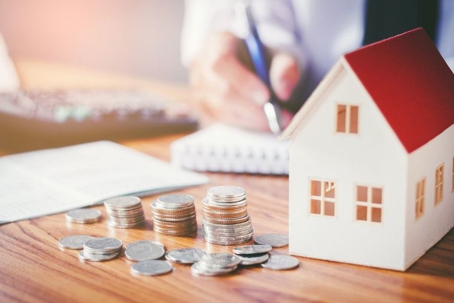Chapter 13 bankruptcy allows debtors to keep all of their possessions as long as they make the agreed-upon payments designated by the bankruptcy court trustee. The debtor makes payments in the repayment plan for 3-5 years (the time is decided by the statute and is based on income) directly to the trustee who distributes the money to the creditors. The amount the debtor ends up paying depends on family income and expenses (even if only one spouse files); the type and amount of debts they owe; where they live and how many people are in the family; the value of debtors’ assets and whether they are “exempt”.
Length of Time You Pay into the Chapter 13 Bankruptcy Repayment Plan
The amount of time you make payments into the chapter 13 repayment plan depends upon whether your average income for the six month period before bankruptcy is above or below the median income for the size of your household and is different state to state and county to county. If your income is below the median, you can pay from 36-60 months. If your income is above the median, you will usually have to make payments for 60 months.
Minimum Monthly Payment
Priority Debts
Certain debts are considered priority debts and must be repaid in full in the plan (i.e.spousal and child support and certain taxes).
Mortgage Payments in Arrears
If you wish to keep your house, you must pay the mortgage amount that you are in arrears. If you don’t wish to keep the house, you do not have to pay it back. If you have a second mortgage or home equity line of credit, and your home is worth less than you owe on your first mortgage, you may not have to pay the second mortgage or home equity line of credit back because of a provision called “Lien Stripping”. The Chapter 13 Plan also requires to make your regular monthly mortgage payments outside the plan.
Car Loans and Other Secured Debts
If you plan on keeping your vehicle(s) and/or other secured property, you will have to repay any arrears in the plan. Like a mortgage, you are also required to keep making the regular monthly payments outside the plan.
Administrative Fees
Chapter 13 trustees are paid a percentage of the total bankruptcy amount, and for that fee they supervise the financial affairs of the debtor, distribute payments to creditors, and make reports to the bankruptcy court. Administrative fees can be as much as 10% of the bankruptcy amount.
Additional Monthly Payment
Disposable Income and Nonexempt Property
If you have disposable income (the amount of money left over after payment is made to allow monthly expenses and required creditors) or nonexempt assets you will have to pay back some or all of your non-priority unsecured debts, such as credit cards, back rent, medical bills, old tax debt and utility bills.The sample chapter 13 payment plan below will help to better understand the bankruptcy process. Let us assume you wish to keep your home, car, and personal property.
Sample Chapter 13 Bankruptcy Repayment Plan
Debts You Must Repay Secured, Priority and % of Unsecured Debts
| 1. Mortgage amount in arrears (if you keep your house) | $36,300 |
| 2. Additional home loans and lines of credit in arrears (if you keep your home) | $2,490 |
| 3. Arrears on vehicle loan (if you plan on keeping your vehicle) | $700 |
| 4. Priority tax debts | $5,700 |
| 5. Alimony and child support in arrears | $3,550 |
| Total secured and priority debt | $48,740 |
The debtor must pay also a percentage (10% to 100%) of unsecured debts based upon the “means test” which is an income-based test and the value of the debtors’ assets which are not considered “exempt”. “Exempt” assets are assets which are protected from creditors and are, therefore, not considered in the Chapter 13 calculation. This is a complicated calculation but assume for a moment that debtor is required to pay 20% of $50,000.00 in unsecured debt (ie credit cards, personal loans, medical bills) or another $10,000.00. Assuming that the plan length is five (5) years, the total monthly plan payment would be $1,076.90 ($58,740 plus 10% trustee commission payable over 60 months or five (5) years. The balance of the $40,000.00 in unsecured debt would be discharged at the end of the plan (wiped away) and better yet the amount does not continue to grow (interest stops accumulating)! The debtor gets five(5) years to catch up on the arrears to the mortgage, taxes and other secured creditors (a deal they would never get outside of Chapter 13)!
As you can surmise, the bankruptcy process is very complex. Filing for Chapter 13 bankruptcy requires expertise from someone who thoroughly understands the bankruptcy process. There are many complicated laws and filing processes that must be observed before a bankruptcy can be finalized. At Robert H. Solomon, PC Attorneys At Law, our goal is to make the chapter 13 bankruptcy repayment plan filing process as easy as possible. Give us a call at (516) 407-8199, or fill out our online form for further assistance.

